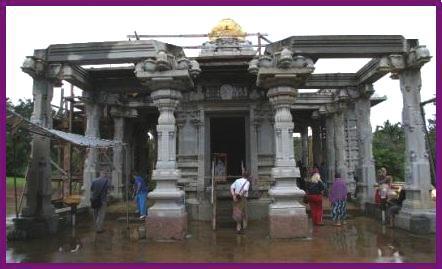Kauai Hindu Temple Demos Sustainable Concrete - GreenBuilding News from PlanetShifter.com
Submitted by Willi on Sun, 25 Apr 2010 - 22:17

Kauai Hindu Temple Demos Sustainable Concrete - GreenBuilding News from PlanetShifter.com
Here's a graphic illustration for how the quick is often the enemy of the sustainable. Kauai's Hindu temple got a foundation built to last 1,000 years-it just took longer to dry (via Hinduism today).
Sure, builders love 'modern' reinforced concrete which reaches full strength in two days, whereas the ancient fly ash concrete takes three months. Yet, the quick-curing concrete only lasts for decades, while the other lasts for millennia.
When the temple's Indian architect specified strength and longevity, it was clear that 'modern' concrete simply wouldn't do, nor would 'modern' builders attempt the 'experiment-which is where UC - Berkeley professor Kumar Mehta came in.
Mehta knows concrete. Returning to the mixture of cement and fly ash used by ancient Greeks and Romans, Mehta fashioned a foundation in which 60% of the portland cement is replaced with fly ash (called high-volume fly ash concrete, or HVFA).
To create the two 6,500sf pads for the stone temple, Mehta's team used only 80 tons of cement, instead of the 230 tons of cement and 75 tons of steel required with conventional reinforced concrete.
Who cares? With cement production now contributing more than 6% of global greenhouse gases and growing fast, alternative construction methods are mandatory. By mixing in some fly ash, we could reduce cement use by half.
Says Mehta:
"If durability and sustainability are important goals, current construction practice and the codes of recommended practice must undergo a paradigm shift to achieve crack-free concrete structures in preference to high speeds of construction."
This temple foundation on Kauai, says Mehta, "demonstrates a revolutionary method of concrete construction which, if widely adopted could save millions of dollars a year, create structures to last far longer than they do now and substantially reduce the introduction of carbon dioxide to the atmosphere."
Of course, there's much more to be said about this new-old concrete-not least its use of mostly locally available materials. It's simply righteous that our good friend Gurudeva (RIP), the visionary behind the Hindu temple, helped us lead the way here.
Source / Image Credits

